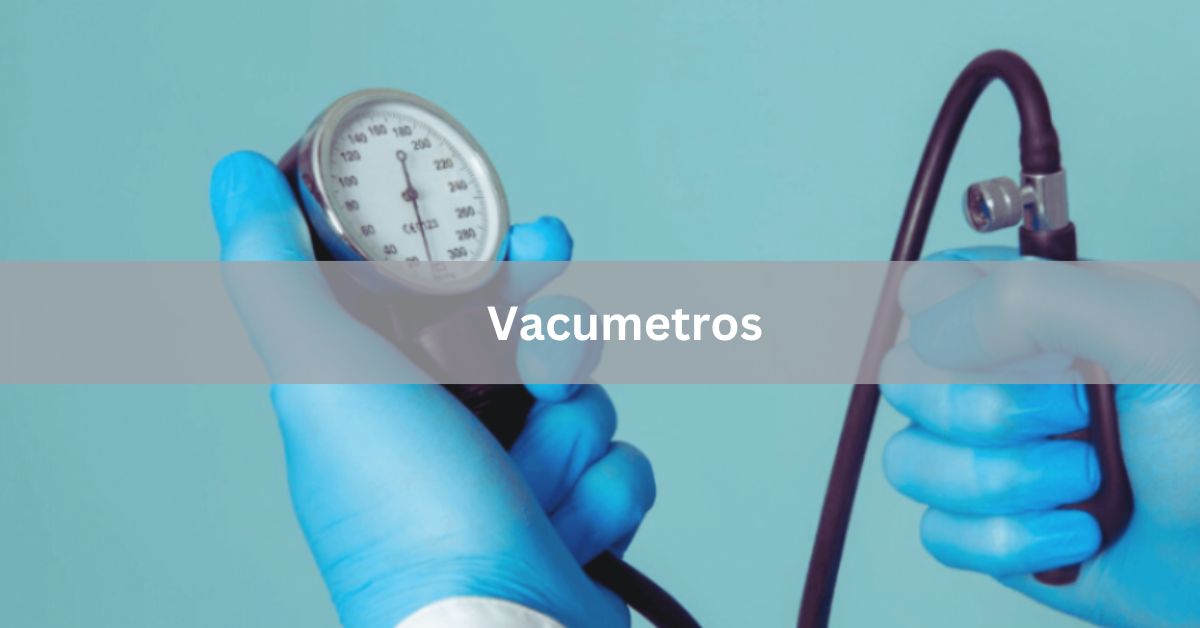Introduction to Vacumetros
Welcome to the world of Vacumetros, where monitoring vacuum integrity takes center stage! If you’re in need of a reliable tool to ensure your vacuum systems are operating at their best, then you’ve come to the right place. In this blog post, we’ll dive into the importance of vacuum integrity, explore the different types and workings of Vacumetros, learn how to use them effectively, discover common industry applications, and uncover maintenance tips for keeping these devices in top-notch condition. So buckle up and get ready to become a Vacumetro expert!
Why Vacuum Integrity is Important
Ensuring vacuum integrity is crucial in various industries for maintaining efficiency and safety. A leak in a vacuum system can lead to contamination, compromised product quality, and even process failure. Whether it’s in pharmaceutical manufacturing, semiconductor production, or aerospace applications, the consequences of a compromised vacuum can be significant.
Maintaining proper vacuum levels is essential for achieving desired results consistently. Vacuum integrity directly impacts the reliability and repeatability of processes. By monitoring and controlling the vacuum level accurately, businesses can optimize their operations and reduce costly downtime.
Moreover, ensuring vacuum integrity is vital for meeting industry regulations and standards. In sectors like food packaging or medical device manufacturing, maintaining a clean and uncontaminated environment through proper vacuum control is non-negotiable.
Understanding why vacuum integrity matters highlights its role as a fundamental aspect of modern industrial processes.
Types of Vacumetros and How They Work
Vacumetros come in various types, each designed for specific applications and levels of accuracy. The most common types include analog vacumetros, digital vacumetros, and portable handheld vacumetros.
Analog vacumetros feature a traditional dial display that provides a visual indication of the vacuum level. On the other hand, digital vacumetros offer precise numerical readings for more accurate monitoring. Portable handheld vacumetros are convenient for on-the-go use and often include additional features like data logging capabilities.
Regardless of the type, all vacumetros work on the principle of measuring pressure within a closed system to determine its vacuum level. When connected to a vacuum chamber or system, the device detects changes in pressure which are then displayed on the screen.
Understanding how different types of vacumetros work is essential for choosing the right tool for your specific vacuum monitoring needs.
How to Use a Vacumetro for Monitoring Vacuum Integrity
When it comes to monitoring vacuum integrity, using a vacumetro is essential. But how do you go about using this device effectively?
First, ensure that the vacumetro is properly calibrated before use. This step ensures accurate readings and reliable results.
Next, connect the vacumetro to the system or chamber that requires monitoring. Make sure all connections are secure to prevent leaks during measurement.
Turn on the vacumetro and allow it some time to stabilize and adjust to the vacuum level within the system.
Observe the readings displayed on the device and take note of any fluctuations or abnormalities in pressure levels.
Regularly check and maintain your vacumetro to ensure its accuracy over time. Calibration should be performed periodically for consistent results.
By following these steps, you can effectively use a vacumetro for monitoring vacuum integrity in various industrial applications.
Common Uses for Vacumetros in Different Industries
Vacumetros play a crucial role in various industries where maintaining vacuum integrity is essential. In the automotive industry, vacumetros are used for checking and ensuring proper sealing in brake systems to guarantee optimal performance and safety on the road.
In the pharmaceutical sector, vacumetros are utilized for monitoring vacuum levels during the production of medications to prevent contamination and ensure product quality. Additionally, in the aerospace industry, these devices are vital for testing and verifying vacuum seals in aircraft components to uphold airworthiness standards.
Moreover, vacumetros find applications in research laboratories for experiments that require controlled vacuum environments. They enable researchers to conduct experiments accurately by precisely measuring pressure levels within chambers or equipment. Across diverse industries, vacumetros serve as indispensable tools for ensuring efficiency and reliability in various processes.
Maintenance and Calibration of Vacumetros
Maintaining and calibrating your Vacumetro is essential to ensure accurate readings and reliable performance. Regular maintenance helps in prolonging the lifespan of your device and ensures it functions optimally when needed.
To maintain your Vacumetro, make sure to clean it regularly using a soft cloth to remove any dirt or debris that may affect its accuracy. Additionally, check for any signs of wear and tear on the device itself, such as cracks or leaks, which could impact its performance.
Calibrating your Vacumetro involves adjusting it to ensure it provides precise measurements. This process typically requires special tools or professional calibration services to guarantee its accuracy. It’s recommended to calibrate your Vacumetro periodically based on manufacturer guidelines or industry standards.
By incorporating routine maintenance and calibration into your vacuum monitoring practices, you can trust that your Vacumetro will continue to deliver accurate results for all your vacuum integrity needs.
Conclusion
Vacumetros play a crucial role in monitoring vacuum integrity across various industries. These devices are essential for ensuring the efficiency and safety of systems that rely on vacuum technology. By understanding the importance of vacuum integrity, knowing how different types of Vacumetros work, and learning how to use and maintain them properly, businesses can effectively monitor their vacuum systems to prevent leaks and maintain optimal performance. Investing in high-quality Vacumetros and following best practices for their maintenance and calibration can ultimately save time, money, and resources in the long run. Stay vigilant about vacuum integrity with Vacumetros to ensure smooth operations and reliable results in your industry.




